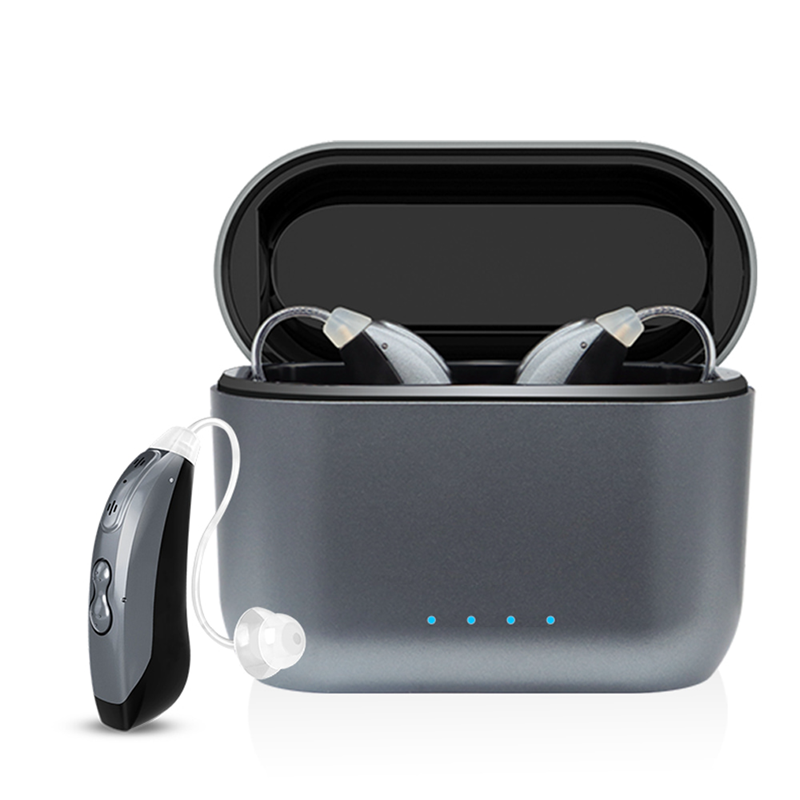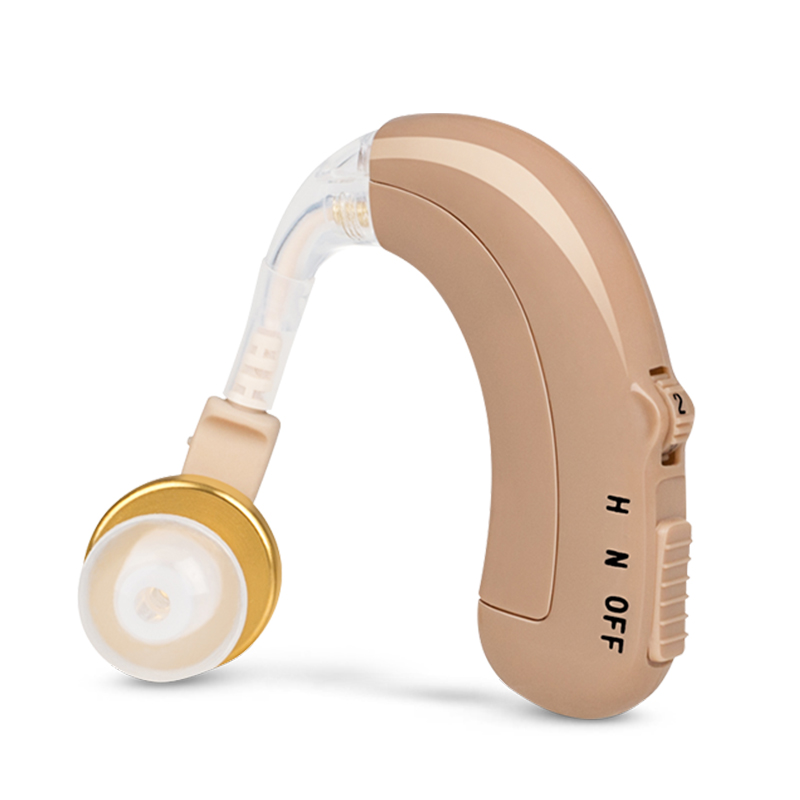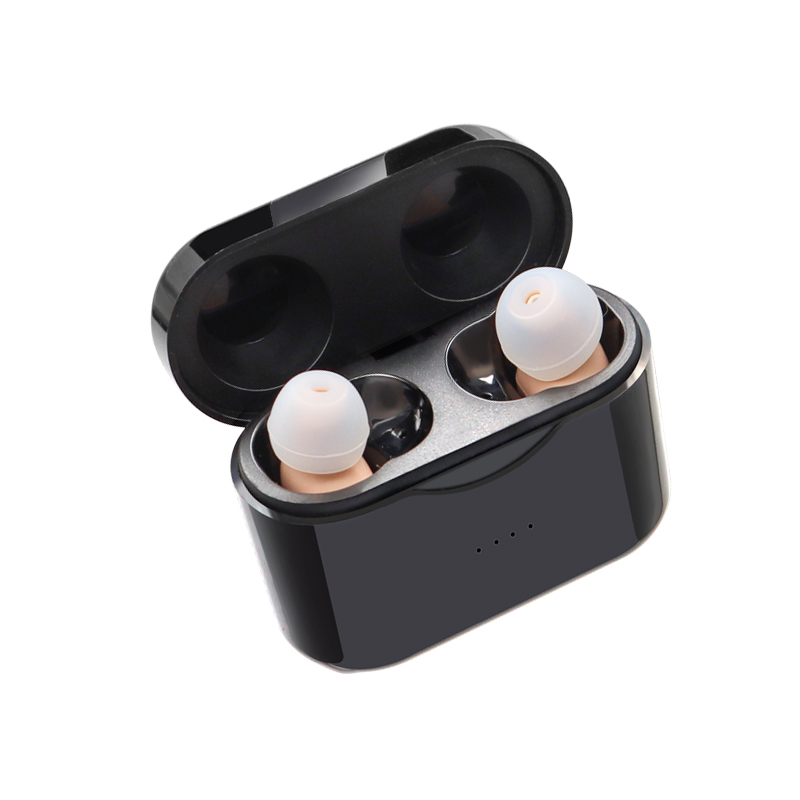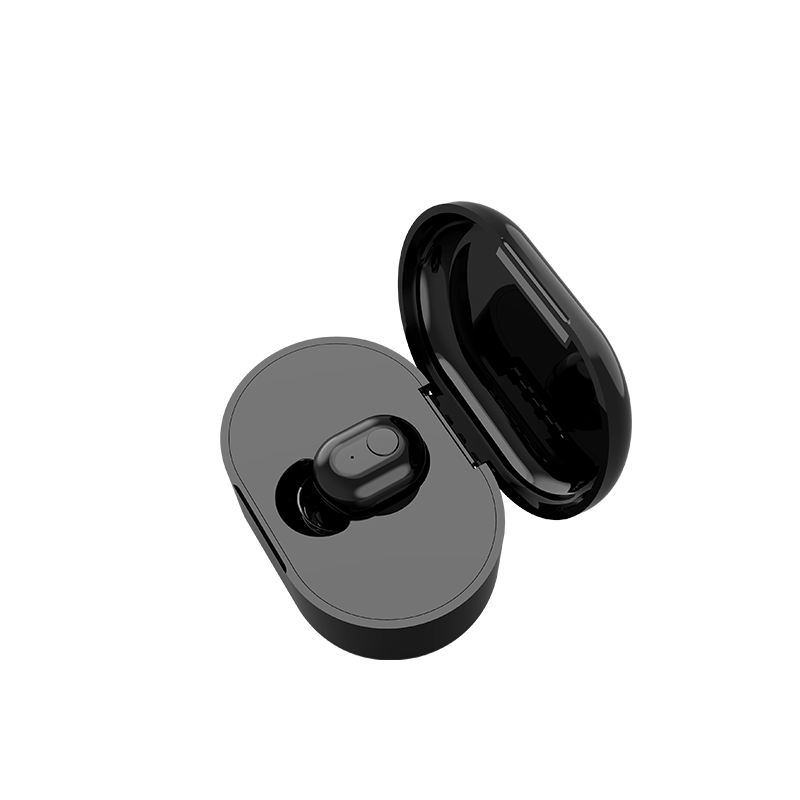Since the Americans with Disabilities Act (ADA) was enacted in 1990, life has become a lot more accessible for everyone–especially for people who are deaf or hearing impaired. The signs of accessibility are everywhere, if you know what you’re looking for.
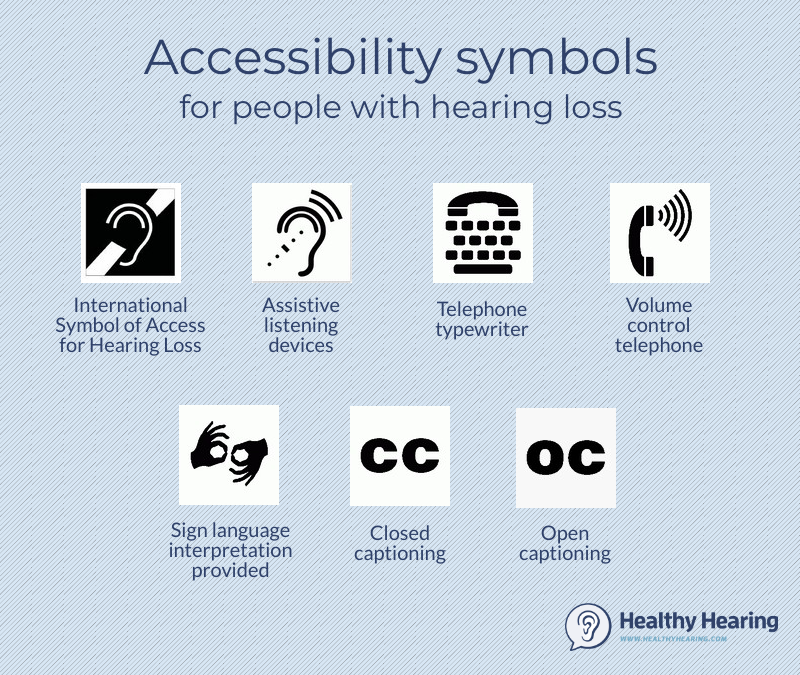
You may see these other symbols posted in public places, but they are
not mandated by the ADA.
Common signs for hearing impaired services
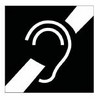
International Symbol of Access for Hearing Loss
Also referred to as the International Symbol for Deafness, this sign indicates there are devices or services available for the deaf or hearing impaired. This is the ADA's preferred symbol to advertise the availability of communication access for the hearing impaired. In the US, the symbol is often on a blue background. Many times, the International Symbol is used with text to indicate the type of hearing service or device provided. These may include:
- A personal frequency modulation (FM) system that is much like a personal radio station operating on a special frequency. The transmitter microphone sends sound directly to a receiver or hearing aid. Personal FM systems are especially useful at lectures or in museums, places of worship and other large group gatherings.
- An induction loop system that works with the telecoil in your hearing aids. When you see the International Symbol with a small "t" at the lower right you know this service is available. Facilities that have been wired with induction loop systems have permanently wired rooms allowing hearing aids to pick up electromagnetic signals from the room’s amplification system.
- Other hearing assistive technology may include telephone or answering machine amplification, loud doorbells, or loud bell/vibrating alarm clocks and smoke detectors.
Assistive listening devices—alternative symbol
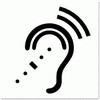
This symbol is sometimes used instead of the International Symbol. It can be used to indicate there are a number of devices that can help individuals with hearing loss, including assistive listening devices.
There are numerous technologies, some which even pair with hearing aids. These make it easier for a person with hearing loss to hear in a particular environment or circumstance.
Note: In the US, this symbol is not widely used and is not part of ADA law.
Sign language interpretation provided

You’ll see this sign displayed wherever sign language interpreters are present.
While some attractions offer this service routinely, it’s always a good idea to check the website or call well in advance of your visit to make sure this service will be provided. Many amusement parks, such as Disneyland and Disney World, require advance notice to request sign language interpretation services. If you’re attending a live event, such as the theater or a lecture, ask to be seated in the sign language audience section.
Also, make sure to indicate what language you speak so that the appropriate interpreter can be assigned.
Closed Captioning (CC)

Since 1993, the Federal Communications Commission has required all televisions with screens larger than 13 inches to have closed captioning capabilities.
This means the audio portion of the program is displayed as text on the television screen. As of 2014, regulations stipulate the text must match the spoken word and describe background noise fully, synchronize with the spoken word, run the complete length of the program and be properly placed and easy to read.
Open Captioning (OC)

While closed captioning is an option that can be turned off and on, open captioning is text that is permanently displayed on the screen.
Since open captioning cannot be turned off, it can be beneficial for individuals with all types of hearing abilities especially in noisy situations such as restaurants or airport terminals.
Open captioning is something designed specifically for people who have trouble hearing, or environments typically perceived as overly loud or noisy.
Telephone typewriter (TTY):

This special device, invented by deaf scientist Robert Weitbrecht in the 1960s, makes it easier for the deaf and hearing impaired to use the telephone.The telephone handset is designed so that users can type and receive messages over the phone line.
This makes it easier to for an individual with hearing loss to communicate, because they won't be competing with other background noises or sounds to understand the conversation.
Volume control telephone
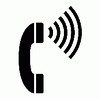
Public telephones displaying this sign have a volume adjustment control for individuals needing amplification.
Some models also include a headset which can help block out background noise, traffic or the conversations of other individuals using the telephones.
Find help for your hearing loss
If you're experiencing hearing issues, struggling with your current hearing aids, or think you might benefit from professional guidance, visit our provider directory to find a hearing care provider near you. Schedule an appointment today to take the first step toward better hearing and improved quality of life.
The above is the interpretation of Universal Symbols for Hearing Loss: What They Mean provided by Chinese hearing aid supplier Shenrui Medical. Link https://www.srmcm.com/Blog/Universal_Symbols_for_Hearing_Loss_What_They_Mean.html of this article is welcome to share and forward. For more hearing aid related information, please visit Blog or take a look at our Hearing aids products


